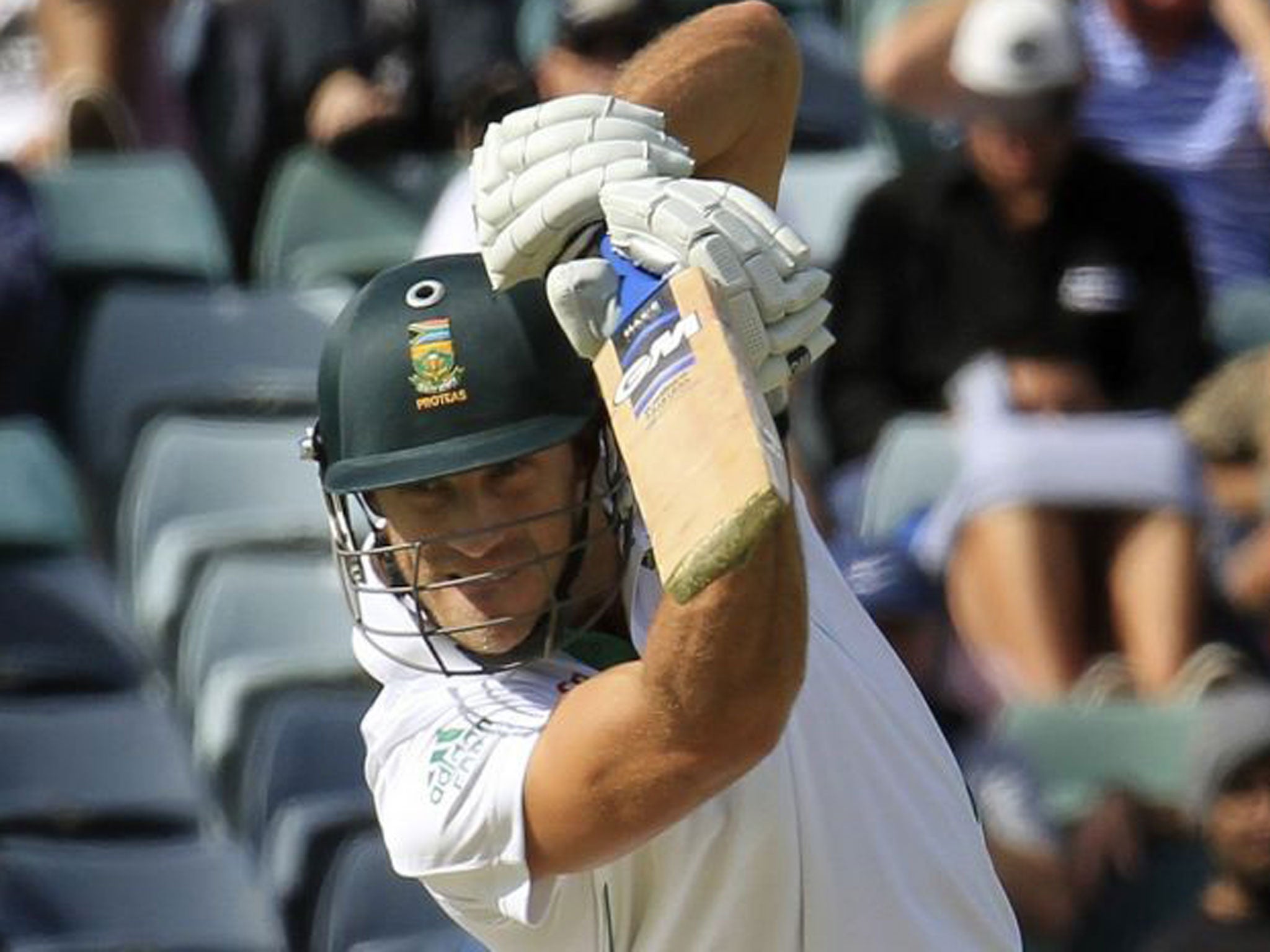The Last Word: How Du Plessis made a stand for a whole generation
A feckless age? Six of the 17 longest Test innings have been played this century

All the initial signs were that he just wouldn't cut it. In T20 thrashes, moving like Nureyev, Faf du Plessis had looked one of the world's best fielders. He had caught Sachin Tendulkar at full stretch, one-handed and tumbling backwards; he was casual author of a run-out, off balance, with a 20-yard view of one stump. Now that he was playing his first Test match, however, he seemed transfixed as the ball spooned gently towards him at backward point. A moment later, Du Plessis and ball were both rolling on the grass, in different directions.
And then he came out to bat. Tried to, anyway. Descending from the Adelaide pavilion, Du Plessis caught a boot on the steps and it came clean off. He knelt, panicking, trying to force on the tightly laced shoe. His mind raced: he was going to be timed out. Either side of the gangway, he heard laughter and jeers. Hey, Faf, didn't they have a pair for two left feet? He jammed the boot half on, hastened on his way – and promptly tripped over the next step. Here was how the Cinderella story plays out in real life. Having waited until 28 to go to the ball, the glass slipper did not seem to fit.
The rest really is history. Du Plessis scored 78 and then, in the second innings, became cornerstone of an epic rearguard action as South Africa saw out 148 overs to save the match – the ninth longest such resistance in Test history. Du Plessis finished unbeaten on 110, from 376 balls, with No 10 clinging to the other end. He has since proceeded to Perth, where 78 not out yesterday (this time from a total of just 225, and batting No 7) leaves him on 266 runs after three Test innings, for once out.
Clearly, he had not been alone in the Adelaide trenches. Dale Steyn compiled a 28-ball duck. Jacques Kallis, on one leg, hung around for two and a half hours. Most remarkably of all, A B de Villiers confined himself to 33 runs from 220 balls, without a single boundary. The swashbuckling De Villiers! Only Chris Tavare, old Drip Dry himself, has managed a more abstemious strike rate for a Test innings in the 30s – taking five and a half hours to congeal 35 runs at Madras in 1982. (At the other end, Graham Gooch had scored 127 when first out, at 155.) But the fact is that Du Plessis arrived at 45 for 4, a putative target of 430 reduced to lasting another four sessions in withering heat and humidity.
More than any other sport, cricket magnifies that redoubt of the human spirit that refuses an obvious destiny. Du Plessis prised a core of inexorability from his team's apparent doom and harnessed it to his own resources, frail as they seemed against such odds: stamina, obstinacy, technique, restraint.
Unique to cricket is the convergence of personal resolution – reflecting an essentially egotistical instinct of self-preservation – and collective interest. Becalmed in the 90s, Du Plessis stemmed a distracting tide of emotion by thinking only of his duty to his comrades, and betrayed a corresponding bashfulness in finally celebrating his ton.
To talk of merely occupying the crease misplaces the emphasis. For the crease itself represents the precarious margin between forbearance and temptation; and so the furrowed, careworn brow. This is already a momentous winter for the competitive purities preserved in the white raiment of Test cricket. Between them Du Plessis and Alastair Cook have exhumed the mysterious rapture that can animate spectators of a five-day stalemate.
How fitting that Test cricket's most cherished rivalry should trace to a cremation. For the ashes of any "dead" match can glow with the dynamic kindling of a phoenix: the birth of a Test batsman, in Du Plessis, or a Test captain, in Cook.
This is said to be a feckless age. Yet six of the 17 longest innings in Test history have been played since 2000. It is too glib, plainly, to charge batsmen of the T20 era with flimsy decadence. In fact, only four of those 17 innings pre-date 1987. True, many factors contribute to that imbalance: the sheer volume of fixtures, and an increasing environmental prejudice towards the bat. But while T20, in particular, absolves him of his responsibility to balance conflicting obligations – and so severs the exquisite tension, between attack and defence, that defines the game – the modern batsman evidently remains capable of deferring fatal indulgence to a nearly tantric degree.
Anomalously, it seems that the stonewaller is applying his mortar more assiduously than ever in the one-day age. It was also at Adelaide, back in 1947, that Godfrey Evans took 97 minutes to get off the mark. He received a telegram from Winston Churchill: "Never did one man bat for so long for so little." Even that record, however, has been eclipsed by a modern batsman: Geoff Allott of New Zealand, with a 101-minute duck in 1999.
Churchill owed some of the finest of his Few to South Africa. And while "Faf" might not sound like a fighter pilot, he has made a stand not just for his country, but also for his generation.
Subscribe to Independent Premium to bookmark this article
Want to bookmark your favourite articles and stories to read or reference later? Start your Independent Premium subscription today.

Join our commenting forum
Join thought-provoking conversations, follow other Independent readers and see their replies